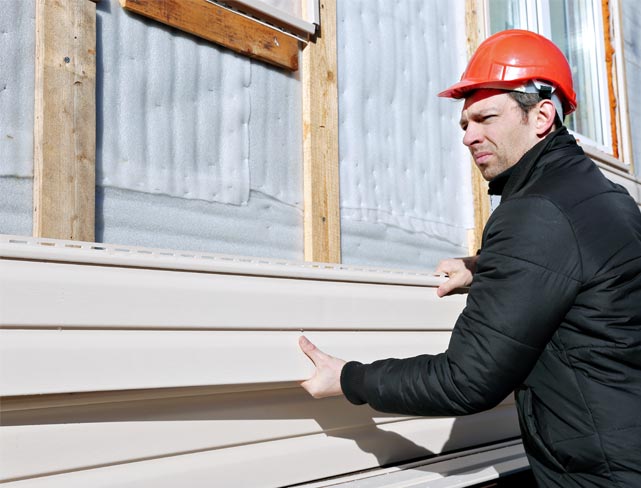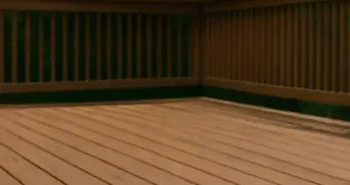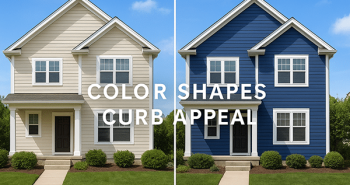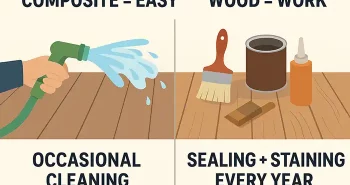Quick Overview: Painting vs. Replacing Siding
Homeowners often face the choice of repainting old siding or replacing it entirely. Each option has trade-offs that affect cost, curb appeal, and long-term maintenance.
- Painting: Lower upfront cost ($1,500–$5,000 on average), quick turnaround, and flexible color choices. But paint lasts only 5–10 years, doesn’t fix underlying damage, and may add less resale value.
- Replacing: Higher upfront cost but provides decades of durability, improved energy efficiency, stronger curb appeal, and higher ROI. Replacement also uncovers and fixes hidden damage.
- How to Choose: Consider siding age, condition, budget, and how long you plan to stay in the home. Painting is a short-term refresh, while replacement is a long-term investment.
First Star Exteriors can inspect your home and guide you toward the option that makes the most sense for your needs.
Curb appeal matters, and siding is one of the first things people notice about your home. Over time, siding fades, cracks, or begins to look worn, forcing homeowners to decide whether to repaint it or replace it entirely. Each option carries its own pros and cons, and the choice can affect your budget, home value, and long-term maintenance. At First Star Exteriors, we work with a wide variety of siding materials — including vinyl, pine and cedar, metal, brick, fiber-cement, and stucco — to give homeowners plenty of options when updating their exterior. This guide breaks down the advantages and disadvantages of painting vs. replacing siding so you can make the best decision for your home.
Reasons Why Your Siding Paint Has Faded
Paint doesn’t last forever, especially on exterior siding exposed to the elements. Sunlight gradually breaks down paint pigments, causing colors to fade. Rain and snow create moisture that can seep into wood or fiber cement siding, peeling away protective layers. Poor initial paint application or using the wrong type of paint also shortens its lifespan.Most siding paint jobs last 5–10 years before showing signs of wear. To keep siding looking good for longer, here are some important maintenance tips to keep your home’s exterior in good shape. If your siding looks dull, chalky, or uneven, it may be time to either repaint or consider replacement, depending on the siding’s overall condition.
Pros of Painting Your Siding
Painting siding is often the most affordable way to refresh your home’s exterior. A professional paint job can cost significantly less than full replacement, making it appealing for homeowners on a budget. For vinyl siding specifically, recent estimates put professional painting at about $1,500–$5,000 for most homes, per This Old House’s 2025 guide.
Another advantage is flexibility. You can choose any color you like, allowing you to update your home’s style and match current design trends. Painting can also extend the life of your existing siding by adding a protective coating that shields against weather.
Finally, painting is quicker than replacement. In many cases, a paint job can be completed within a week, minimizing disruption to yourCons of Painting Your Siding
The biggest drawback of painting siding is its limited durability. Even with high-quality paint, most siding needs repainting every 5–10 years. This means more ongoing maintenance and costs over time.
Painting also doesn’t solve underlying problems. If your siding has rot, cracks, or warping, a new coat of paint won’t fix the damage. In many cases, proper siding maintenance can extend the life of materials, but once structural damage sets in, replacement is the safer option. In fact, it may temporarily cover issues that worsen later.
Another disadvantage is resale appeal. Buyers often prefer new siding over painted siding, especially if the existing material is older. While painting improves curb appeal, it may not add as much long-term value as replacement.
Pros of Replacing Your Siding
Replacing siding is a long-term investment that offers multiple benefits. First, it dramatically boosts your home’s curb appeal. New siding gives your home a fresh, updated look that lasts for decades rather than just years.
Second, replacement can increase property value. According to real estate studies, siding replacement projects often deliver one of the highest returns on investment among home improvements. Potential buyers are more likely to pay a premium for homes with brand-new siding.
Third, new siding can improve energy efficiency. Many modern siding materials include insulation options that help regulate indoor temperatures, lowering heating and cooling costs. The U.S. Department of Energy recommends adding continuous exterior insulation when replacing siding to reduce thermal bridging and improve comfort.
Fourth, replacement addresses hidden damage. Removing old siding often reveals issues like rot, mold, or insect damage that painting would simply cover up. By replacing, you ensure these problems are corrected.Finally, new siding reduces future maintenance. Materials like vinyl or fiber cement require minimal upkeep compared to wood siding that needs regular repainting. Many fiber cement products carry long warranties—for example, 30-year substrate warranties offered on select James Hardie lines—supporting their long-term durability. If you’re not sure what fits your budget and design goals, check out our guide on what is the best siding for your home. At First Star Exteriors, we install siding options that combine durability with low maintenance, giving homeowners long-term peace of mind.
Cons of Replacing Your Siding
The main disadvantage of siding replacement is the upfront cost. Depending on the material, replacement can cost tens of thousands of dollars, far more than repainting.
Another drawback is the project timeline. While painting may take a week, siding replacement can take several weeks, especially for larger homes. This means more disruption for homeowners.
Replacement also isn’t always necessary. If your siding is structurally sound and only has cosmetic issues like fading, repainting may be the more practical and cost-effective choice. For homeowners considering a full upgrade, it also helps to understand the options when choosing between vertical and horizontal siding installation.
Painting or Replacing Siding: How to Choose the Best Option for You
The right choice depends on your siding’s condition, your budget, and your long-term plans for the home. Here are the main factors to consider:
Age of Siding
Older siding that has been repainted multiple times may not hold paint well anymore. If your siding is 20+ years old, replacement is often the smarter choice. Our article on when’s the best time of year for a siding installation explains how timing can also affect the success of your project.
Cost Comparison
Painting typically costs a fraction of replacement. However, because paint needs to be reapplied every 5–10 years, costs can add up. Replacement requires a higher upfront investment but provides decades of durability and often increases resale value.
Condition
Inspect your siding carefully. If you notice cracks, rot, warping, or water damage, painting won’t solve these problems. Replacement is usually necessary to protect your home’s structure. If the siding is otherwise sound, painting may be sufficient.
Long-Term Plans
If you plan to stay in your home for decades, replacement may pay off in the long run. But if you’re preparing to sell soon and want a quick refresh, painting may be the better option to boost curb appeal without overspending.
Work With a Professional for the Right Choice
Deciding between painting and replacing siding isn’t always straightforward. A professional siding contractor can inspect your home, identify hidden issues, and provide cost estimates for both options.At First Star Exteriors, we specialize in helping homeowners choose the right siding solution. We work with a variety of materials — including vinyl, pine and cedar, metal, brick, fiber-cement, and stucco — so you’ll have plenty of options to match your budget and design goals. Every material has unique advantages and limitations, and our team will guide you through each one so you can make the best decision for your home.
Conclusion
Painting siding is a cost-effective way to refresh your home, but it requires ongoing upkeep and doesn’t solve deeper issues. Replacing siding costs more upfront, but it delivers long-term durability, energy savings, and added property value.
Both options have advantages, but the right choice depends on your siding’s age, condition, and your future plans. With First Star Exteriors, you don’t have to make the decision alone. Our siding experts will evaluate your home, explain the pros and cons of painting vs. replacement, and help you select from popular materials like vinyl, cedar, fiber-cement, metal, brick, or stucco. Contact us today to schedule your consultation and take the first step toward a beautiful, long-lasting exterior.





